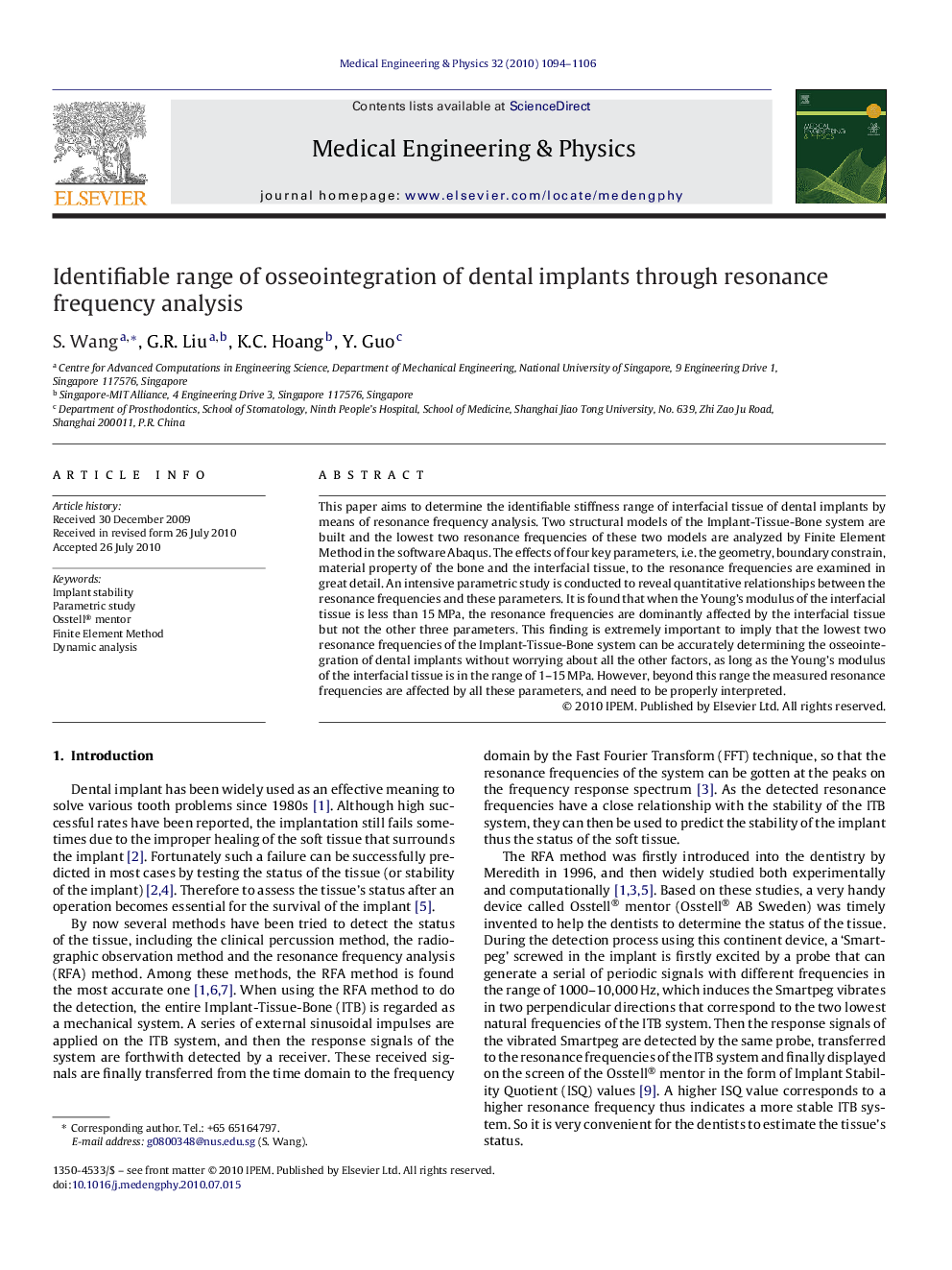| Article ID | Journal | Published Year | Pages | File Type |
|---|---|---|---|---|
| 876957 | Medical Engineering & Physics | 2010 | 13 Pages |
This paper aims to determine the identifiable stiffness range of interfacial tissue of dental implants by means of resonance frequency analysis. Two structural models of the Implant-Tissue-Bone system are built and the lowest two resonance frequencies of these two models are analyzed by Finite Element Method in the software Abaqus. The effects of four key parameters, i.e. the geometry, boundary constrain, material property of the bone and the interfacial tissue, to the resonance frequencies are examined in great detail. An intensive parametric study is conducted to reveal quantitative relationships between the resonance frequencies and these parameters. It is found that when the Young's modulus of the interfacial tissue is less than 15 MPa, the resonance frequencies are dominantly affected by the interfacial tissue but not the other three parameters. This finding is extremely important to imply that the lowest two resonance frequencies of the Implant-Tissue-Bone system can be accurately determining the osseointegration of dental implants without worrying about all the other factors, as long as the Young's modulus of the interfacial tissue is in the range of 1–15 MPa. However, beyond this range the measured resonance frequencies are affected by all these parameters, and need to be properly interpreted.
